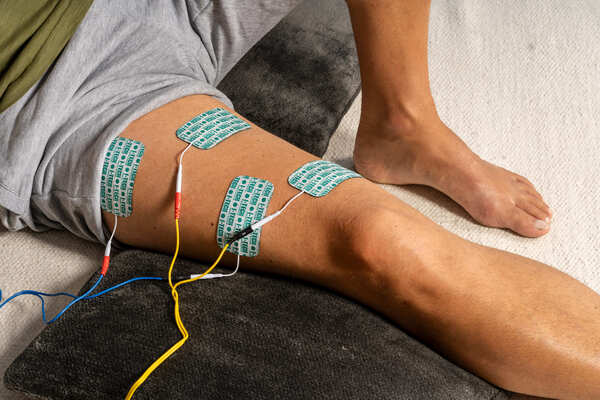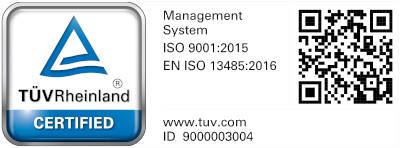Electrostimulation is a technique that stimulates muscles to train them in a similar but more effective way than traditional methods. Specific programs can be used to help recover from fatigue, reduce contractures, and decrease the perception of pain. In addition, with special currents, drugs can be delivered into the tissues effectively and noninvasively.
How many times a day can the electrostimulator be used?
You can do multiple sessions of electrostimulation in a day, but not on the same muscle group. For example, you may train your legs in one session and your abs in another. Within a week, you can see excellent results with 2 or 3 sessions on the same muscle group.
| Monday | Tuesday | Wednesday | Thursday | Friday | Saturday | Sunday |
|---|---|---|---|---|---|---|
| Legs | Arms and trunk | Legs | Arms and trunk | Legs | Arms and trunk |
The table presents a hypothetical training program for arms, trunk and legs, considering a 6-day-a-week commitment.
How to dress for an electrostimulation session?
The most comfortable clothes while using an electrostimulator are sports clothes, particularly shorts when training the legs and a T-shirt when training the abs or back. It is important that they are lightweight clothes which allow quick access to the cables as well as free movement.
Where to place the electrodes for electrostimulation?
What muscles are stimulated and where are electrodes placed for electrostimulation
You can stimulate all superficial muscle groups that are easily reached by electrical stimulation. Remember that the electrodes in each channel must be placed on the same muscle group. The muscles most stimulated are the quadriceps and glutes in the lower limbs, the triceps, biceps, and deltoids in the upper limbs, and the abdominals in the trunk.
Benefits of electrostimulation training
Regular use of electrostimulation brings several benefits, such as muscle strengthening, injury prevention, and improved quality of life, especially for those who are less physically active.
This technique can increase muscle strength through specific training programs. The benefits can be noticed by both those with active lifestyles and those who are more sedentary through toning and circulation improvement programs. These programs not only improve strength, but also peripheral vascularity, after just a few sessions.
How to manage training intensity
After the first few days, it is important to gradually increase the intensity of electrostimulation, always respecting one’s sensitivity. The goal is to gradually increase the intensity of the current used to activate more muscle fibers. However, it is essential to proceed gradually to avoid excessive fatigue. This shrewdness can lead to optimal results by limiting the risk of exaggerated muscle fatigue.
Working with too low intensity activates few muscle fibers. Increasing the intensity, on the other hand, stimulates more muscle fibers with electrical impulses, making the workout more effective and improving results.
To increase intensity without fatigue, it is helpful to voluntarily contract the muscle when the electrostimulator-induced contraction begins. This increases proprioceptive activity and reduces the sensation of “involuntary” contraction of the muscle, making it more comfortable and effective to increase contraction and improving overall results.
It is advisable to note the intensity achieved at each session to stimulate a gradual increase in subsequent sessions.
How long the training sessions last
The duration of an exercise session depends on the type of program and the desired goal. Generally, electrostimulators present preset programs in which the duration is already optimized.
Indicatively, training sessions last between 20 and 25 minutes. If recommended by a professional, you can customize the duration to suit your training level and goals.
How many calories are burned during an electrostimulation session
Calculating calorie consumption during electrostimulation is difficult because usually calories burned depend on heart rate, as monitored by our smartwatches. However, stimulating a single muscle group does not affect heart rate much, which is useful for non-sporty people. Although it may seem limiting, it is important to consider that activating a single muscle increases local energy consumption, including stored sugars and fats. This can improve local metabolism, making, for example, abdominal work particularly effective for aesthetic and not just performance purposes.
Muscle electrostimulation for legs
During a leg workout, if you want to focus on the thighs, place the electrodes on the quadriceps. Be sure not to place them on oily skin or after applying creams-this is to keep the electrodes in good condition and ensure good signal transmission. Follow the placement directions in the I-Tech Medical Division manuals, this way you will effectively activate the muscles and maintain a high level of comfort.

After placing the electrodes and connecting the cables, choose the program that suits your goals and start your training session. Make sure you are comfortable and have good control of your knee angle, such as sitting with your feet firmly on the ground or resting on a stable surface.
Once you start the program, gradually increase the intensity until you feel a clear stimulator-induced muscle contraction. It is advisable to gradually increase the intensity of the current during the session, and in subsequent sessions, to engage more muscle fibers and achieve better results. In the beginning, do not overdo the intensity to avoid excessive muscle pain in subsequent days (known as D.O.M.S.).
After completing the quadriceps workout, you can continue with the other leg muscle groups, such as the glutes or calves, following the same process. Or, end the training session and remove the electrodes.
For those who are already familiar with the use of the electrostimulator, more advanced programs can be started that allow agonist and antagonist muscle groups to be trained simultaneously. This allows you to work with a greater volume of work in a similar amount of time.
Electrostimulator for training
Muscle electrostimulation can be a great help for athletes, both professional and amateur. It offers benefits both in terms of performance and prevention, reducing the risk of injury.
From a performance point of view, it is important to understand which muscle groups and goals one wants to improve, choosing suitable programs such as maximal strength, explosive strength or endurance, based, precisely, on one’s desires.
To optimize muscle improvements, it is advisable to incorporate regular physical workouts, including during technical sessions, to improve control of increasing muscle capacity. This can lead to extraordinary results during sports practice.
Injury prevention is crucial for professional athletes but often neglected by those who play sports for leisure. However, it is precisely the latter who can benefit most from electrostimulation to reduce the risk of injury. By using electrostimulation correctly, muscle strength and endurance can be rapidly increased, making muscles more responsive to falls or injuries, limiting damage to tendons, joints and ligaments.
We can say that, in general, electrostimulation of muscles is an excellent “assistant,” being a very useful tool both for recovering from fatigue after a day of work or sports, and for being a personal assistant for athletic training or conducting fitness sessions at home.
The benefits are evident after just one training cycle, without having to spend too much time on already busy days.
To find the right device for your needs, contact our customer service department: we will be happy to give you additional information and help you choose the right one, as well as guide you in the proper use of the electrostimulator.






